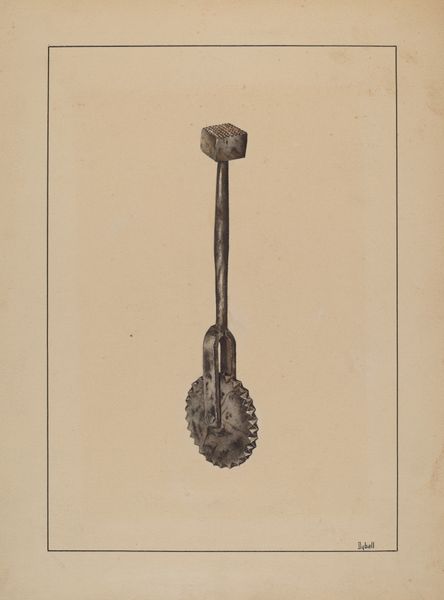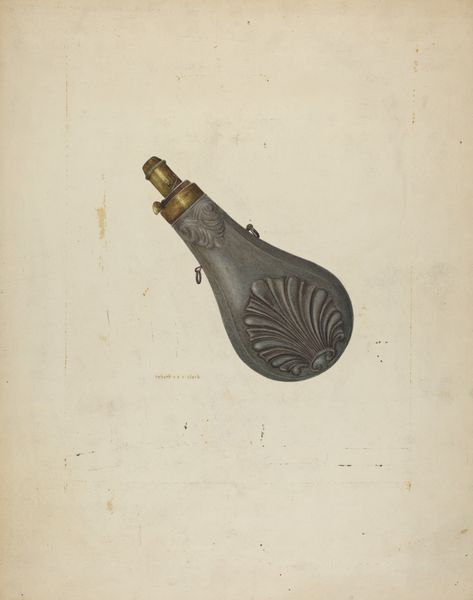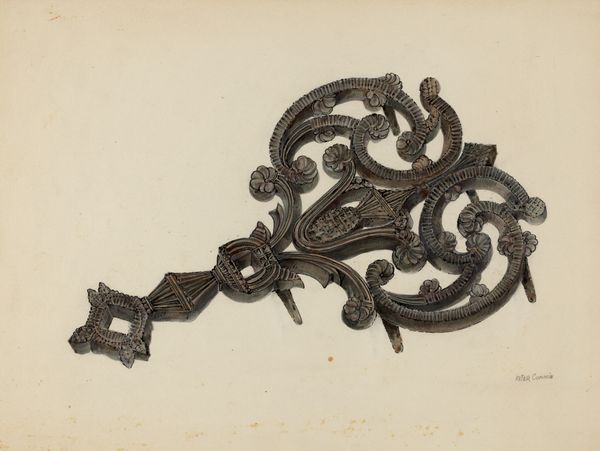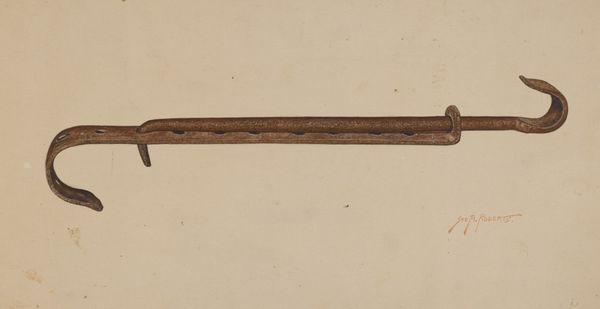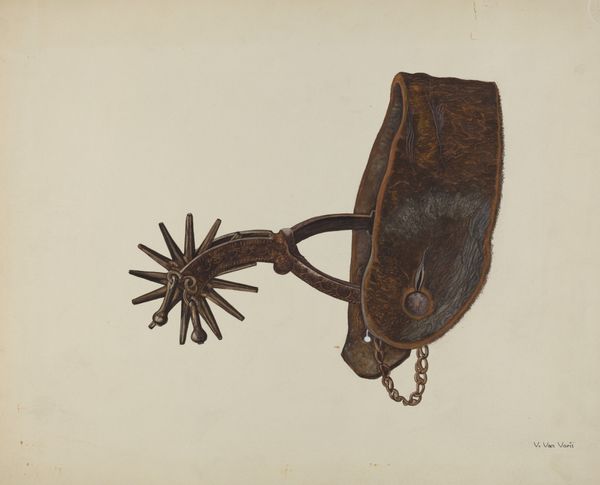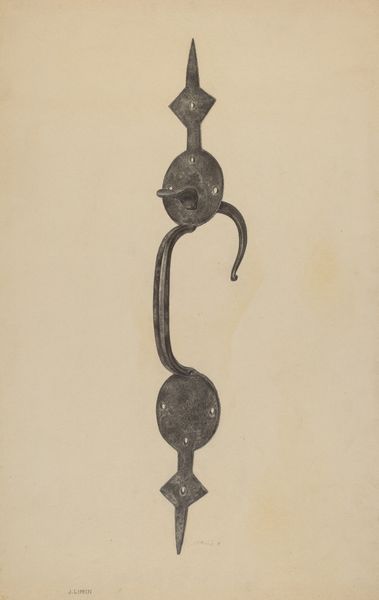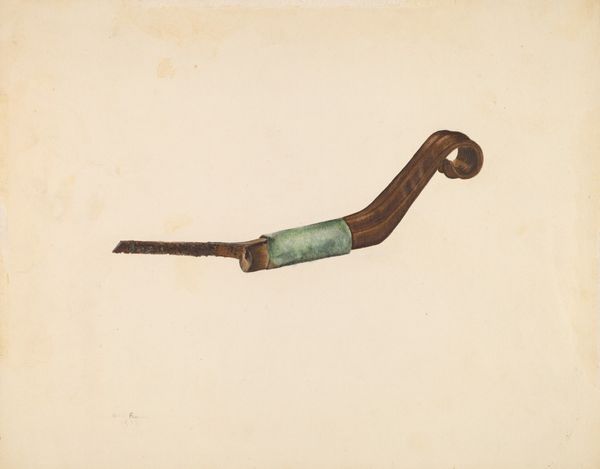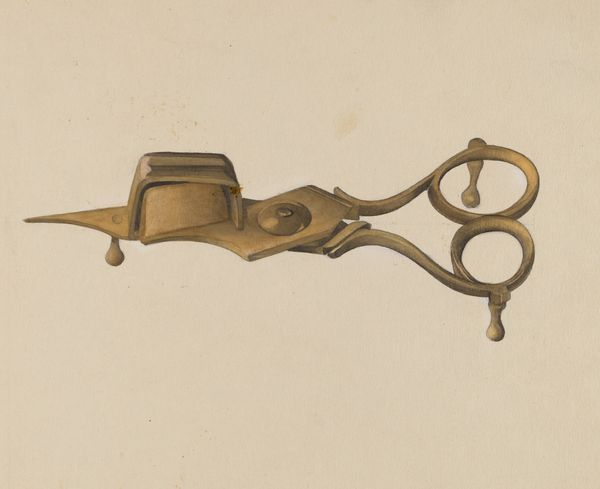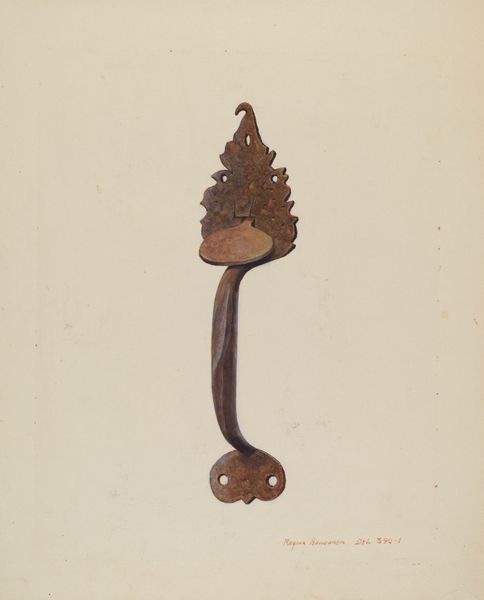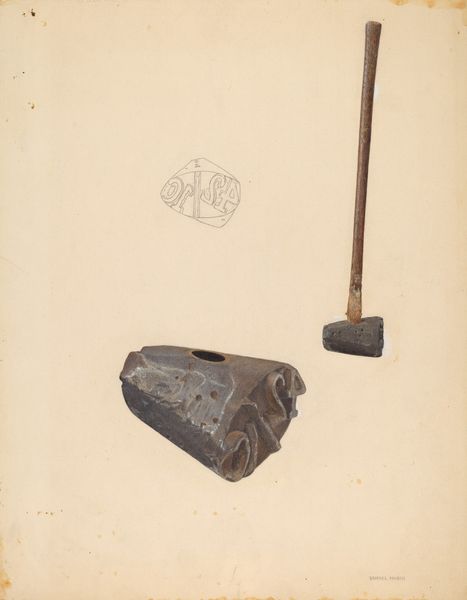
Indiase of Indonesische vaas versierd met patronen van vissen en dieren c. 1890 - 1922
0:00
0:00
drawing, paper, watercolor, ink
#
drawing
#
arts-&-crafts-movement
#
vase
#
paper
#
watercolor
#
ink
#
coloured pencil
#
orientalism
#
watercolour illustration
#
watercolor
Copyright: Rijks Museum: Open Domain
Editor: This watercolor drawing, entitled "Indiase of Indonesische vaas versierd met patronen van vissen en dieren," dating from around 1890-1922, really captivates me with its intricate patterns. What structural elements stand out to you? Curator: The most compelling aspect is the meticulous balance achieved through contrasting forms. Observe the juxtaposition of the rigid, cylindrical neck against the bulbous body of the vase. Furthermore, the repetitive yet varied ornamentation creates a dynamic tension. What do you make of the chain? Editor: I hadn’t really considered the chain before, but now I see how it creates a sort of implied narrative or, dare I say, functionality within the composition. Curator: Precisely. And the materiality—the rendering of metallic surfaces with watercolor—adds another layer of complexity. Note the strategic use of light and shadow to suggest form. How does this interplay affect your understanding of the depicted object? Editor: It gives it weight and dimension, especially in the body of the vase. It makes the decoration look almost etched. The light and shadow definitely emphasizes its three-dimensionality. Is this an attempt at hyperrealism, despite being a drawing of decoration on a vase, if that makes sense? Curator: Not necessarily. One could argue the drawing prioritizes surface pattern and tactile illusion. In either interpretation, a certain disjunction emerges when considered alongside its Arts and Crafts movement roots. Are there other compositional tensions at play? Editor: This has been so interesting. The contrast of rigid versus curvilinear, light versus shadow... I'm going to think more about those formal dynamics in relation to the imagery from now on. Curator: Agreed. Close visual analysis allows us to appreciate an object's artistic composition independent of symbolism.
Comments
No comments
Be the first to comment and join the conversation on the ultimate creative platform.

